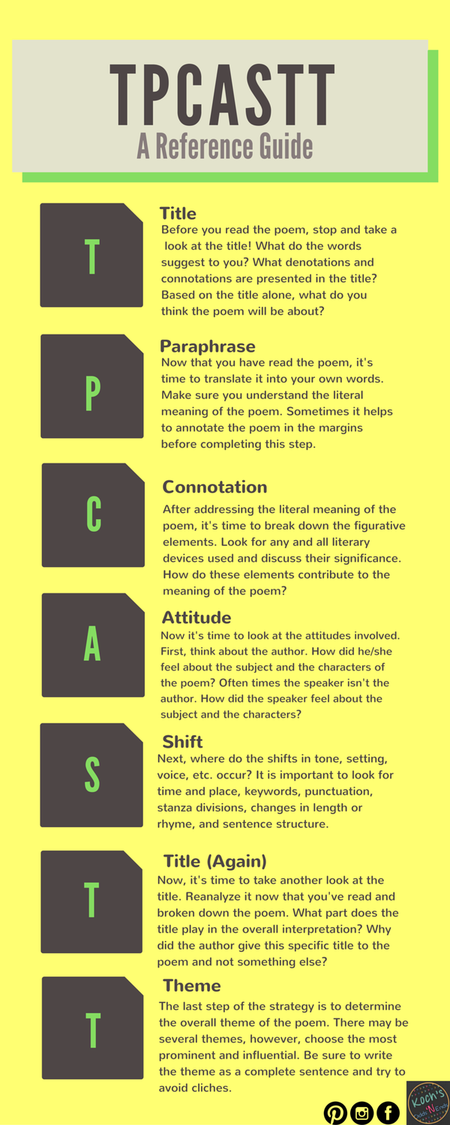This year marks the 400th anniversary of Shakespeare's death. His first folio is on a
50-state tour in the United States. Perhaps you will be able to see the exhibit in a town near you.
The folios, published in 1623, are credited with preserving 36 of Shakespeare's plays. Of those plays, eighteen had never been published before. Can you imagine our world without
Macbeth or
Julius Caesar?
But even if the first folio tour doesn't get you charged up, you can't deny the influence Shakespeare has had on the English language. Read (and share with your students)
Bernard Levin's clever "On Quoting Shakespeare" essay. Or think about the movies (
West Side Story anyone?) that adapt plots from Shakespeare's plays -- plots that we still find riveting 400 years later.
While studying an entire play can be challenging and require more time that you may have available, you
can introduce your students to Shakespeare through his sonnets. He wrote 154 of them. The language of the sonnets can be intimidating to students, but by using some basic poetry analysis tools, your students will be able to understand the content of the sonnet. Not only that, so many of Shakespeare's sonnets are completely relatable to teens. The agony and loneliness of Sonnets 29 and 30 could be written by a teen, and Sonnet 18 is beautiful!
Tools for Reading a Sonnet
1. Read it out loud. Students will often struggle with the language, but if they are just listening for meaning, they can often get the big ideas rather than get hung up on details.
2. Vocabulary. Make sure your students have a clear understanding of any new vocabulary in the sonnet.

3. Paraphrase. This is the golden key to helping students understand poetry. Ask them to "translate" the poem line by line, but also to connect what is happening throughout the sonnet. Each line is linked to the next since the sonnet is building an "argument."
4. Let your students figure out the form. Rather than telling them, allow students to discover how the sonnet is put together. Students should be able to identify the rhyme scheme (three quatrains and a couplet). They may have more trouble with the meter, but that's where clapping out the accented syllables will help. I wouldn't fret too much about making sure they can scan a poem or identify iambic pentameter. The idea is to help students notice the rhythm of the language.
5. Keep asking students to tell you what they notice -- you will find that they can not only understand the meaning of the poem, they will be able to figure out how it is constructed. The one thing I did not allow my students to say was, "I don't get it" because that means they've given up trying!
6. Don't forget the turn. The end of the sonnet is like a punchline. What is the message, epiphany, resolution?
Tools for Writing a Sonnet

1. Choose a simple topic. Any topic can be used -- adopting a pet, last Saturday's soccer game, my messy closet, what's in your lunchbox...help students choose a topic that has a clear beginning, middle, and end.
2. Work backwards. Once students understand the format of a sonnet, they can write their sonnet "backwards" by beginning with the end rhyme in mind. This allows students to stop obsessing about what rhymes with "orange" and focus on what they want their sonnet to be about.
3. Try for the turn. The ending of the poem should resolve an issue or share an epiphany. What do you want your reader to learn or understand after reading this sonnet?

4. Relax. It's a sonnet! Writing one is a bit like doing a sudoku puzzle or completing a crossword puzzle. Some of your students will really enjoy the challenge, and other won't. But challenging students to write a sonnet is something they may never have the opportunity to try again! You can be the teacher who introduced your students to a completely new form of literature!!
You can tell by now, that I love sonnets (and all poetry, but that's the topic for another blog post!). I just hope that I've encouraged you to share a sonnet, and William Shakespeare, with your students! There is still time to plan a party ! April 23 is his recognized birthday since there are only baptismal records and no birth certificates. (Interestingly enough, it is also the date of his death.)
If you're looking for more detailed help, you can check out
Sonnet 29 on my Teachers Pay Teachers store. It will guide you every step of the way!
Enjoy sharing great literature and challenging writing experiences with your students!
Happiness always,









































